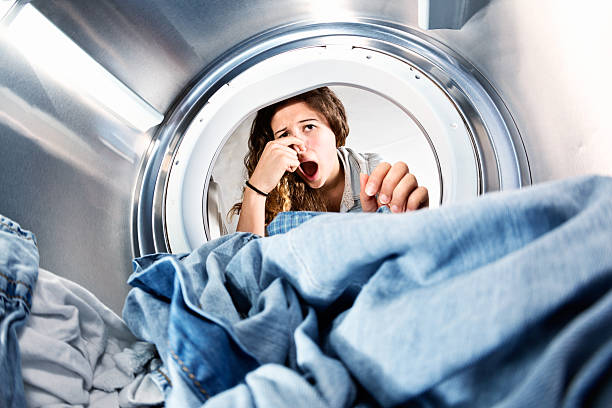Keeping your washing machine clean is essential to ensuring fresh clothes and linens each and every wash. Over time, detergent residues, fabric softeners, and minerals from the water can build up within the machine, leading to odors, mildew, and reduced efficiency. To prevent these issues, follow these simple steps to clean your washing machine and keep it in tip-top shape.
1. Gather Cleaning Supplies

Before you begin cleaning your washing machine, make sure you have all the necessary supplies on hand. This will streamline the process and ensure you don’t miss any steps. Key materials you will need include:
- White vinegar
- Baking soda
- Microfiber cloths
- Old toothbrush
- Soft-bristled brush
- Optional: Commercial washing machine cleaner
Having these supplies ready will help you tackle different parts of the washing machine effectively. While white vinegar and baking soda are excellent for breaking down residues, a microfiber cloth and brushes are great for scrubbing and wiping.
2. Clean the Drum
The drum is where your clothes sit during the wash cycle, so it is crucial to keep it clean to avoid any transfer of grime or bacteria onto your laundry. Start by running an empty cycle with hot water and two cups of white vinegar. The vinegar will help disinfect the drum and dissolve any detergent or mineral build-up.
After the cycle with vinegar, sprinkle about half a cup of baking soda into the drum and run another empty cycle with hot water. Baking soda will neutralize any remaining odors and help scrub away any residues stuck to the drum. Once both cycles have completed, use a microfiber cloth to wipe down the inside of the drum thoroughly.
3. Clean the Detergent Drawer
The detergent drawer is often one of the most neglected areas in washing machines, but it can harbor a lot of mold and mildew. Remove the drawer from the washing machine and soak it in a sink filled with hot, soapy water. Let it sit for about 20 minutes.
After soaking, use an old toothbrush to scrub away any remaining detergent or softener build-up. Pay special attention to any nooks and crannies where mold might be hiding. Rinse the drawer thoroughly with clean water and dry it completely before putting it back into your washing machine.
4. Wipe Down the Exterior
The exterior of your washing machine can accumulate dust, detergent spills, and other residues that can eventually make their way inside. Use a damp microfiber cloth to wipe down the exterior, including the control panel, door, and all surfaces.
If you encounter any stubborn spots, a mixture of equal parts water and white vinegar can serve as an effective cleaning solution. Avoid using abrasive cleaners, as they may scratch the surface of your washing machine. Regularly cleaning the exterior not only keeps your washing machine looking good but also prevents dirt and grime from entering the drum.
5. Maintain Regular Cleaning Schedule
Regular maintenance is key to keeping your washing machine in optimal condition. Aim to clean the drum and detergent drawer at least once a month to prevent build-up of residues and mildew. Additionally, leave the washing machine door slightly open between uses to allow ventilation and prevent mold growth.
Create a simple checklist to track your cleaning schedule and ensure you never miss this important maintenance task. By keeping up with regular cleaning, you’ll prolong your washing machine’s lifespan and continue enjoying fresh clothes and linens with every wash.
Conclusion
Cleaning your washing machine doesn’t have to be a daunting task. By following these straightforward steps and maintaining a regular cleaning schedule, you can ensure that your machine remains efficient, odor-free, and ready to provide you with fresh laundry. Gather your supplies, clean the drum, drawer, and exterior, and you’ll be well on your way to a cleaner, more efficient washing experience.
FAQs
How often should I clean my washing machine?
You should aim to clean your washing machine at least once a month. However, if you notice any foul odors or visible build-up, it’s best to clean it more frequently.
Can I use bleach to clean my washing machine?
Yes, you can use bleach to clean your washing machine, but it’s generally recommended to use white vinegar and baking soda because they are less harsh and more environmentally friendly.
Is it necessary to clean the detergent drawer?
Yes, cleaning the detergent drawer is essential because this area can accumulate mold and mildew, which can cause unpleasant odors and transfer to your laundry.
What should I do if my washing machine still smells after cleaning?
If your washing machine still smells after cleaning, consider running another cycle with baking soda and vinegar. Also, regularly clean the door seal and leave the door open between uses to prevent mold buildup.
Can commercial washing machine cleaners be used instead of DIY solutions?
Yes, you can use commercial washing machine cleaners if you prefer. They are designed to clean effectively and can be an alternative if you are short on time or if DIY solutions don’t seem to work well for you.
